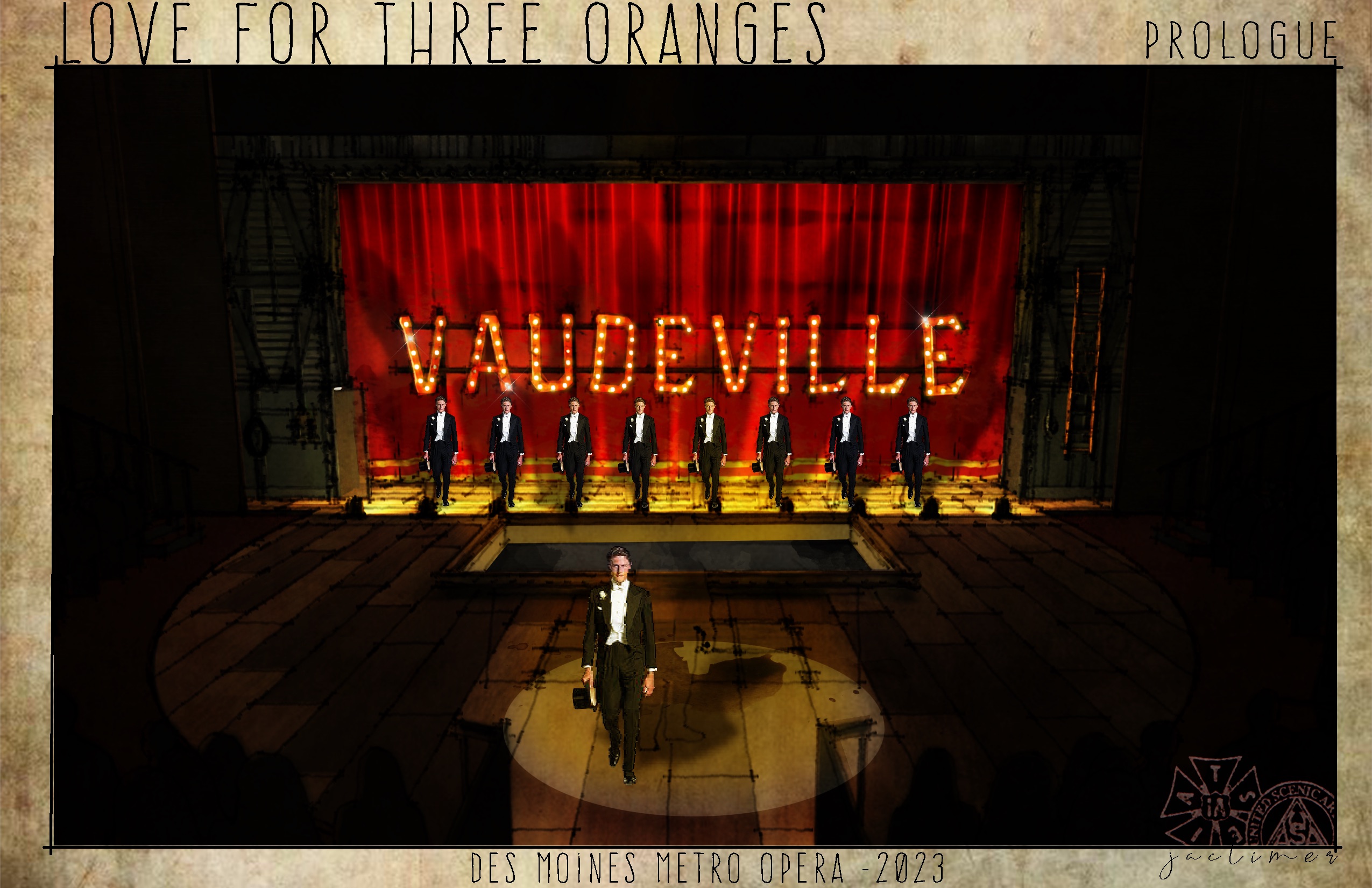
4 minute read
The Love for Three Oranges: Making a Scene
An interview with Scenic and Costume Designer Jacob A. Climer
You are no stranger to DMMO. Your original designs of A Midsummer Night’s Dream, Platée, Rusalka, Orphée et Eurydice and The Abduction from the Seraglio have enchanted audiences and garnered high praise from critics. This summer you are designing sets and costumes for Sergei Prokofiev’s rarely performed The Love for Three Oranges
Advertisement
Describe your process when creating a new production. What are the rewards and challenges about designing for our unique theatre?
I always start my process by meeting with the director. I want their take on it. While this is happening, I research the story, period, and context. Only then do I listen to the music and start working through the problems of the show. All scripts have problems—well, all scripts but Gypsy—so I look for the gaps.
In Oranges, two characters are blown across a desert by a magical wind. What now?! That’s going to be something we must solve. While working through these issues, I grab onto visuals, and those images become the tools we use to tell the story. Oranges is set in a theatre, so we are turning up the volume on that.
As for the theatre itself, most of my career has been in thrust stages, and I love that they lend themselves to intimacy. You can make smaller choices that make a larger impact. Details are appreciated and help audiences enjoy themselves. The downside is that the floor is ninety percent of your scenery, and floors are weirdly expensive.
Tell us about the concept behind this summer’s new production of The Love for Three Oranges.
For Oranges—which is huge and insane—I must make the show digestible. I literally must put it in a box. Luckily for us, the show was written in the early 20th century, premiered in America, and is set inside a theatre!
When researching the period, listening to the show and trading images with Chas, early American vaudeville—pre-1940s musical theatre—kept coming to mind. This style is all about pastiche. In vaudeville, you’d have a collection of eclectic scenes, including a dog number and a juggler, and it was all over the place. Similarly, everything in Oranges is disjointed. So we asked the question, “What if this is a vaudeville show?” What if this production is trying to make vaudeville make sense? The disjointed nature of the piece fits well with this disjointed style of early-American theatre.
What should audiences expect to see?
Flash! Razzamatazz! I think there’s an audacity of size here. It’s one of the biggest shows we’ve done. With all the various roles the chorus plays, we are looking at more than 90 characters. Additionally, there are a lot of fun witticisms. I can’t wait for this show to shimmer.
What are some of your favorite designs you’ve done for DMMO?
Orphée taught me to love opera. The simplicity of those solutions matched the simplicity of the score. I often think about that show as a defining production for me. Also, I loved Platée. How insane was that?! I love when historical periods interpret other eras, so I loved being able to explore my love of drag culture, 1970s films and more through the lens of the 18th century.
What are you most excited about in returning to DMMO in 2023?
I truly love the company. It’s a safe place to work as an artist and a person. It is a space that is created for artists to succeed. And even when things aren’t ideal or going the way we want them to, the vibe is very positive. With most of my career on the road, it’s nice to return to a place that feels like home.








